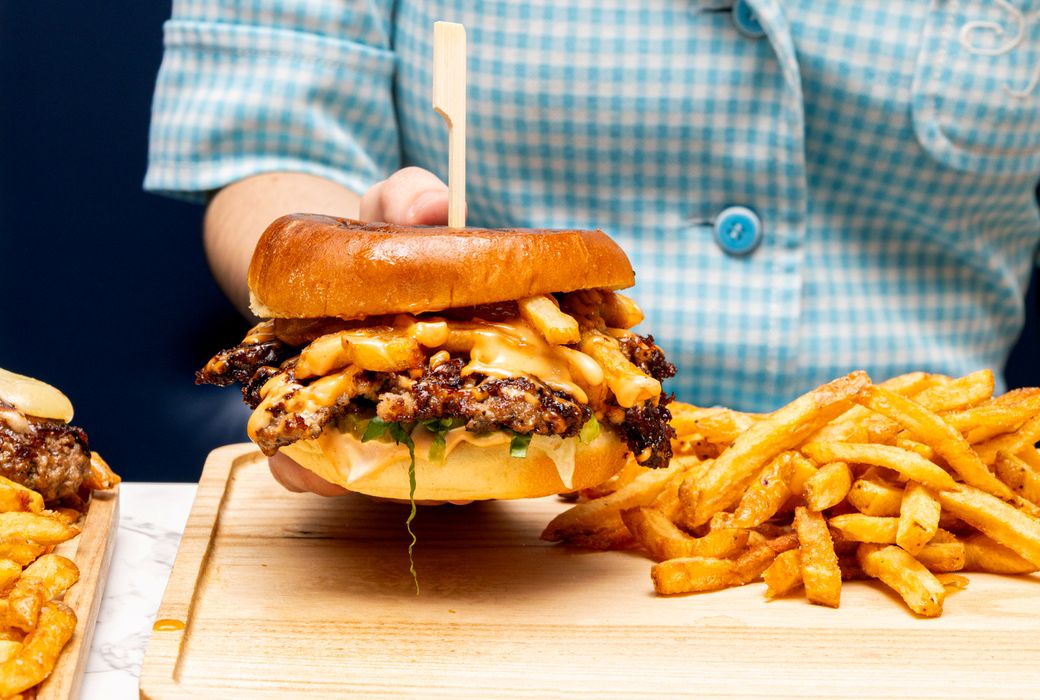Blue Nile
Blue Nile is an Ethiopian restaurant popular with locals around the East Danforth. Here you get meals in the typical style featuring huge sharing platters.
They have lots of vegan, meat, and seafood options and traditional dishes like kitfo, and you’re able to select your spice level.
The space is moody but happy and colourful. There's a bar with an industrial feel near the front and a more lounge-y area with screen with video of Ethiopian dance and sax projected onto it.
A meat combo for one is $16, $28 to serve two, and offers a combination of spicy key wat, kitfo, doro, mild alicha wat, gomen ayib, and salad.
A Nile Vegetarian Platter ($15) combines typical heavily spiced and seasoned, warm and stewed veggies like chickpeas, lentils, cabbage, split peas and collard greens.
In most Ethiopian restaurants, like here at Blue Nile, everything is eaten with the hands using light, fluffy injera bread that's serves as a scooping mechanism.
Here injera is made from 40% teff, 40% self-raising and 20% barley flour, and you can even get gluten-free injera for a $3 charge.
Doro wat ($15) is a classic hearty, rich poultry dish of chicken cooked in a mild sauce served with a hard-boiled egg.
Kitfo ($15) may look a little intimidating to some in its raw state, but the fresh lean minced beef isn’t much different from your average steak tartare and delicious when eaten as prescribed with goat cheese and spice accompaniments you can dab onto your injera before scooping.
As a nice touch there are plenty of craft beers and ciders on draft ($7) to wash down a huge meal of spicy, rich food, including Pommie’s, Great Lakes, Beau’s, and even hyper-local Left Field and Muddy York.
End your meal in the most traditional way possible with an Ethiopian coffee ceremony ($15) complete with incense and coffee being prepared from start to finish before your eyes.
This place has solidified itself as one of the best Ethiopian restaurants in Toronto, and it’s easy to see why with its good representation of a wide range of dietary options, authentic preparations, reasonable prices and good-sized portions.
Restaurants like this are some of the few places where vegetarians and carnivores can truly come together to enjoy equally tasty food as a community.






